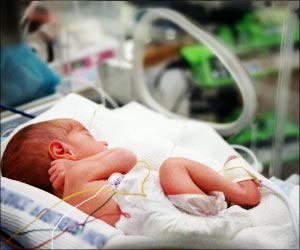An MRI can help detect placenta accreta, a potentially life-threatening and common condition befalling expectant women either before or after delivery.
An MRI can help detect placenta accreta, a potentially life-threatening and common condition befalling expectant women either before or after delivery. This was revealed by a study presented today at the annual meeting of the Radiological Society of North America (RSNA).
"Due to the increase in cesarean sections and other surgeries that leave scarring on the uterine wall, coupled with women giving birth later in life, the incidence of accreta has increased dramatically over the past 20 years," said lead researcher Reena Malhotra, M.D., a radiologist at the University of California, San Diego (UCSD) in La Jolla.Placenta accreta, in which the placenta surrounding a fetus attaches too deeply to a woman's uterus, is most dangerous when the condition is not detected until the time of delivery. When a placenta that is deeply attached to the uterus is delivered along with a baby, it pulls with it parts of the blood-rich uterine wall, rupturing blood vessels that can lead to severe hemorrhaging in the mother, as well as complications for the baby. Severe cases, particularly when undiagnosed, may lead to massive hemorrhage requiring blood transfusion, hysterectomy or death of the mother.
While routine prenatal ultrasound is often able to identify the presence of placenta accreta, it is not always able to definitively diagnose subtle cases.
To evaluate the accuracy of MRI in diagnosing placenta accreta, 108 patients underwent MRI evaluation at UCSD between 1992 and 2009. The women were referred for MRI based on a suspicious prenatal ultrasound or clinical examination or significant risk factors for the condition. Risk factors for placenta accreta include placenta previa (placenta covers all or part of the cervix), uterine scarring, prior cesarean births and, in some cases, pregnancies after the age of 35.
The researchers were able to compare the MR images with surgical and/or pathology results in 71 of 108 cases. When correlated with surgical and pathology findings, MRI had a 90.1 percent accuracy rate in detecting the presence of accreta. MRI does not expose the mother or fetus to ionizing radiation.
"Our findings demonstrate that MRI is an extremely useful adjunct to ultrasound for assessing this potentially life-threatening obstetric condition," Dr. Malhotra said.
Advertisement
Once placenta accreta is diagnosed, a pregnancy is considered high risk, and specialists will carefully monitor a woman's prenatal care and delivery.
Advertisement
Source-Eurekalert
SAV















